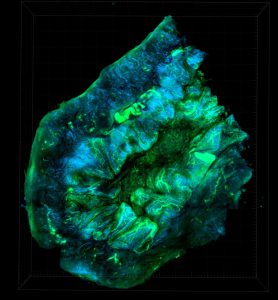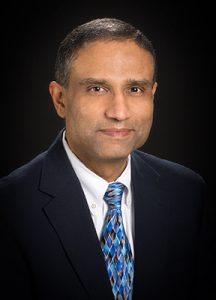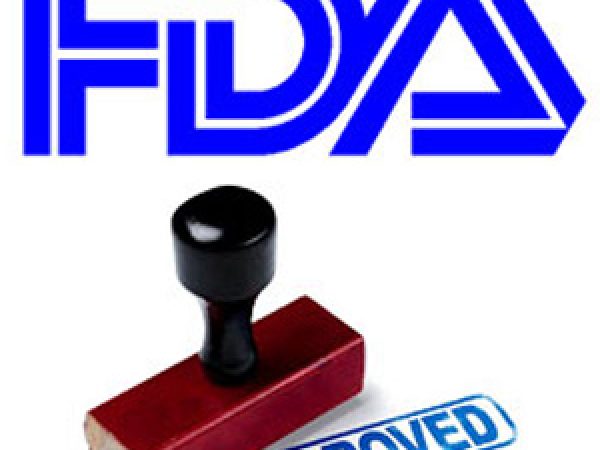Q&A with Anil K. Sood, MD, on Ovarian Cancer Research and Treatment
On Sunday, almost 300 of the greatest minds in ovarian cancer research will come together in Pittsburgh to discuss the latest advances in the field at the American Association for Cancer Research (AACR) four-day conference on Addressing Critical Questions in Ovarian Cancer Research and Treatment.
The past three years have seen remarkable progress for patients with ovarian cancer in the form of the approval of three molecularly targeted therapies called PARP inhibitors. Despite these advances, the overall ovarian cancer five-year relative survival rate is 46.5 percent, according to data from the National Cancer Institute Surveillance, Epidemiology, and End Results Program. The outlook is better if we consider only those diagnosed at an early stage; the five-year relative survival rate for localized ovarian cancer is 92.5 percent. However, just 15 percent of ovarian cancers are diagnosed at this stage.
These statistics highlight that there remains a tremendous need for more research if we are to effectively control ovarian cancer. We asked one of the co-chairs of the Addressing Critical Questions in Ovarian Cancer Research and Treatment conference, Anil K. Sood, MD, professor and vice chair for translational research in the Departments of Gynecologic Oncology and Cancer Biology at The University of Texas MD Anderson Cancer Center in Houston, to share his thoughts about some of the most exciting areas of research that will be discussed at the meeting.
The meeting is titled “Addressing Critical Questions in Ovarian Cancer Research and Treatment.” Can you explain how this title reflects the status of the field?
The past few years have seen us begin to translate our growing understanding of the biology of ovarian cancer into effective approaches to treatment. However, ovarian cancer remains a deadly disease for many women and it is clear that we have much left to learn. With that in mind, my cochairs [Robert C. Bast, Jr., MD, and Ursula A. Matulonis, MD] and I developed a program designed to delve into some of the biggest unanswered questions in the field. For example: How can we improve the effectiveness of PARP inhibitors? How can we make breakthroughs in prevention and early detection?
By bringing together key leaders in all aspects of ovarian cancer research from around the world, early career investigators, and representatives from several ovarian cancer advocacy organizations, we hope to stimulate discussion that will catalyze new avenues of research and drive progress for years to come.
On behalf of investigators who are not able to make it to the meeting, can you tell us about some of the topics that will be discussed?
This is an exciting time in ovarian cancer research. The field is evolving rapidly and we have designed the program so that each session focuses on one fast-moving area of research, including improvement of early detection and identification of high-risk individuals, DNA damage and repair, metabolic changes in ovarian cancer cells and stroma, tumor microenvironment, autophagy, and the genotype and phenotype of rare ovarian cancers.
In each session, presentations will provide attendees with information about the current state of the field and the new directions being pursued. For example, Dr. Bast will lead off the plenary session on prevention and early detection by reviewing the field of early detection of ovarian cancer. The subsequent speakers in the session will focus on cutting-edge approaches to improving early detection of ovarian cancer by using new technologies.
One area that shows promise for near-term translation to the clinic is our growing understanding of the molecular mechanisms by which cancers become resistant to chemotherapy and PARP inhibitors. We have sessions focusing on research looking to identify ways to overcome resistance to these treatments.
I also want to mention that we have a panel discussion centered on innovative clinical trial design. This is an important topic because our increasing knowledge of the biology of ovarian cancer provides us with the opportunity to design and conduct clinical trials that can help address some of the biggest challenges in clinical ovarian cancer research: the long period of time it takes to translate a scientific discovery to an advance in the clinic and the low rates of patient accrual to clinical trials.
Early-career investigators are critical to maintaining progress in the future. What can they expect to gain from attending this meeting?
The involvement of early-career investigators in this meeting is vital for its success. As a result, we have made significant efforts to devise ways to include them throughout. It starts on the first day of the meeting, when there is an educational session that will provide attendees primers on several topics that they will hear about throughout the meeting, including clinical biology, genomics and other “omics,” immunology and immunotherapy, and conventional therapy.
Then each day, there will be opportunities for networking at roundtables. We have also included in the program oral presentations from several early-career investigators. Presenting data at an international conference provides early-career investigators with a unique chance to hone skills that will be invaluable to them as they embark upon independent research careers.
To learn more about the Addressing Critical Questions in Ovarian Cancer Research and Treatment conference, watch this message from conference cochairs Robert C. Bast, Jr., MD, the Harry Carothers Wiess Distinguished University Chair for Cancer Research at The University of Texas MD Anderson Cancer Center; and Ursula A. Matulonis, MD, medical director and program leader of the Medical Gynecologic Oncology Program at Dana-Farber Cancer Institute in Boston.
https://www.youtube.com/watch?time_continue=63&v=ZZ7HQTwgA38





